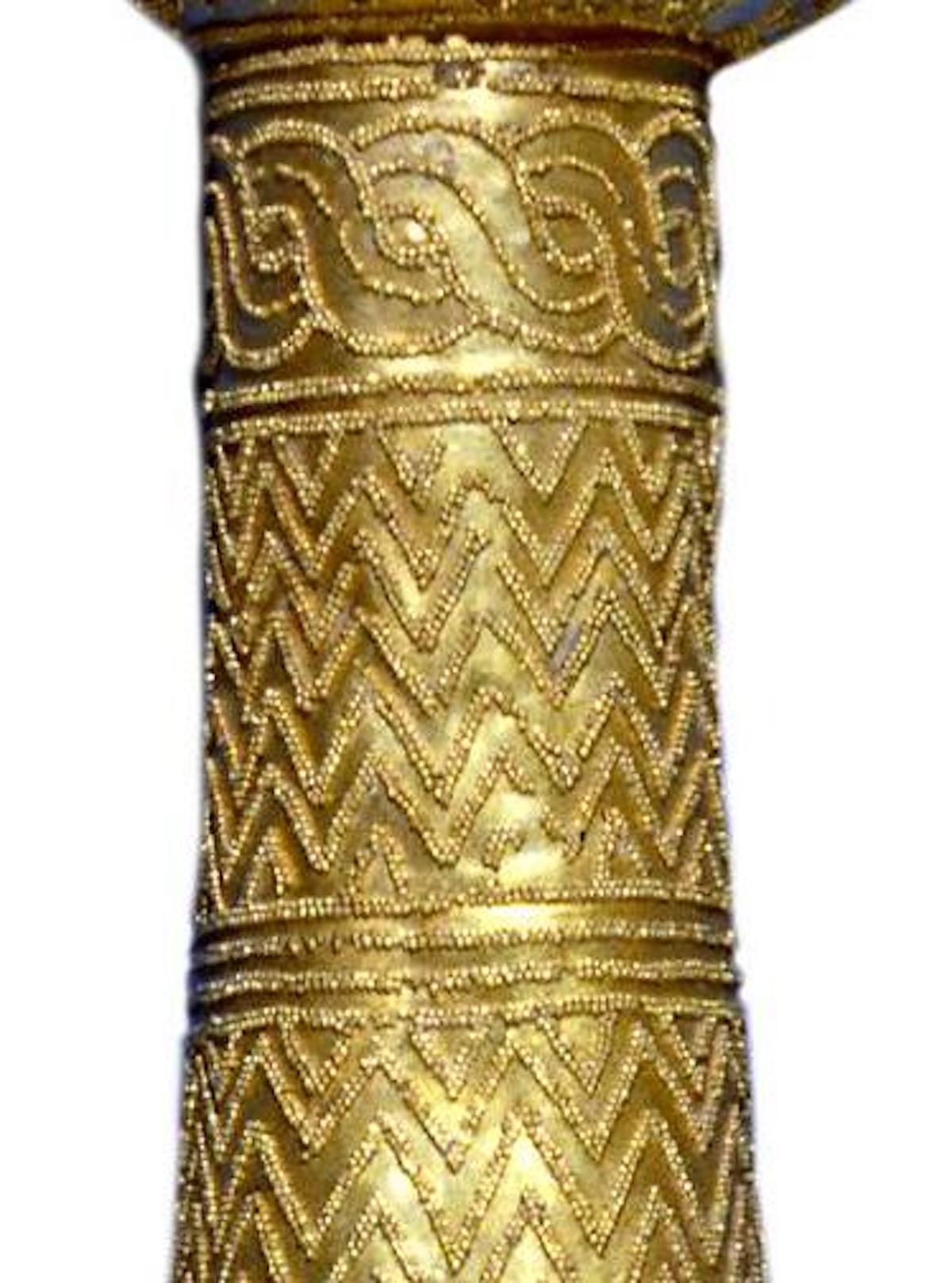Gold is so deeply intertwined with human society and history that it even plays an important role in many myths, such as that of King Midas (738-676 BCE), who was given the ability by the god Dionysus to turn everything he touched into gold. Midas, however, unable even to eat and drink, soon asked mercy for his greed and, following the instructions of Dionysus, he washed his body in the river Pattolo (now known as the Sarabat) which immediately took away his gift. Since then, the Sarabat became known as one of the primary sources of electro, a natural alloy of gold and silver, that was meticulously searched for among the river’s sands for centuries. The fortune of the Lydian kings—an ancient region located in the western areas of modern-day Turkey—such as that of Gige (680-644 BCE) who was instead called “pholychcrysos” (rich-in-gold), was predicated upon access to and control of gold. In fact, the Lydians' control of wealth was so great that during the second half of the 7th century BCE, the first coin to be created was made of electro.
Among the other cultures that inhabited the Western world, the Etruscans, a people with a well-known taste for luxury, attested also by the splendid painted tombs and burials with abundant grave goods, also utilized a substantial amount of that shiny and incorruptible metal. Molded into a multitude of different shapes and objects and decorated in the most diverse ways, the gold works of the Etruscans amaze with their exquisite workmanship. Some of their ornaments were made with a particular technique commonly known as “granulation” which consisted of juxtaposing tiny spheres of gold, never bigger than 1 mm in diameter, in order to create designs or patterns on a wide variety of objects.




























